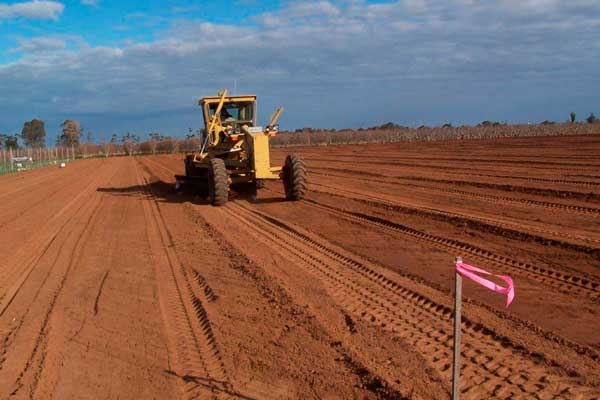In a fruit tree, the yield of fruit results from a balance between vegetative growth and associated fruiting.
The production of fruit is tied to management which affects how the tree’s resources (e.g. photosynthates, water, nutrients and hormones) are distributed throughout the tree.
Economics force us to consider how and to what degree those resources need to be distributed toward vegetative or reproductive growth, both in the current season and in the long term.
About this article
In this article we report how root growth and fruit production can be controlled through managing the soil, the tree and through managing the supply of irrigation water in orchards, using the north-central region of Victoria, Australia as an example.
Objective of orchard management
The general objective of orchard management is to maximise fruit production while minimising growth of unproductive wood (branches that do not produce fruit). With any combination of scion and rootstock, vegetative and reproductive growth are genetically balanced.
It is well known that the tree maintains a constant ratio between roots and shoots. That is, the more vigorous the roots, the more vigorous the shoots.
So you need to control the roots in order to control the shoots. This can be done by:
natural and artificial barriers in the soil
competition with roots from neighbouring fruit trees
controlled spread and penetration of irrigation water.
These effects can be manipulated to greatly enhance yield and manageability of high-density plantings.
You can use several methods to control root activity in spring, thereby decreasing vegetative vigour and increasing fruit growth.
It therefore follows that if you can control root growth in spring you can decrease the vegetative vigour of shoots, and hence increase fruit growth, especially on young fruit trees.
We realise the importance of putting this into practice, since the climate and growth-controlling soils of the Goulburn Valley in Australia, enable orchardists to grow a wide range of temperate fruit crops during a season lasting eight months.
To manage root growth of fruit trees, a good knowledge of roots and root growth is essential.
Facts about roots and root growth
There is a direct relationship between the size of the root system and the size of the tree above-ground. That is, roots regulate the growth of shoots.
Roots also absorb and supply water and nutrients to the tree and anchor the tree.
Before leaf fall, substantial concentrations of carbohydrates and nutrients are moved and stored in the trunk and roots to be used during the next growing season.
Roots also produce growth substances such as cytokinins and gibberellins that are transported to the shoots to control shoot growth.
In a growth cycle, root cytokinin stimulates terminal buds and use of stored carbohydrates and nutrients. At first, there is vigorous vegetative growth with consequent production of auxin and gibberellin in the shoot tips. Photosynthates produced by the fully mature leaves then move through phloem to the shoots, roots and fruit.
A lack of hormones produced in the roots decreases shoot growth. Thus, roots play a major role in the maintenance and balance of the whole tree.
Fruit trees speed up or slow down their growth in response to signals about the soil that are sent by the roots to the shoots.
Root tips launch these signals as hormones, to inform shoots and leaves about the soil’s water and nutrients, hardness, water availability and temperature.
All of the root’s primary growth (cell division) is concentrated at about 5 mm from the root tip. These effects may increase or decrease the volume of soil accessible to the roots for taking up water and nutrients.
Management of the soil definitely effects root development. It is well known that roots of mature deciduous fruit trees grow in flushes. The end of the initial peak in root growth usually corresponds with the beginning of active shoot growth.
(continued next issue)
See this article in Tree Fruit Aug 2017






















